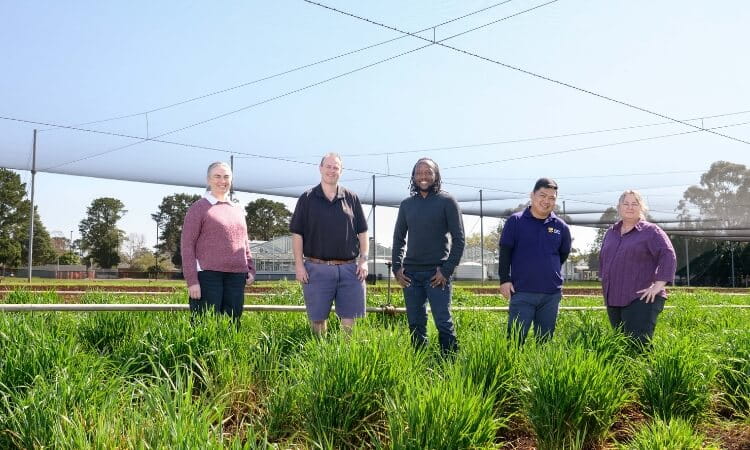The emotional and physical toll of drought and floods on Australian agricultural communities is costly, but the financial toll is forever front of mind for those in primary production – especially when it comes to insurance.
But thanks to researchers from the University of Southern Queensland, a new Drought Resilience Innovation Grants project led by the Queensland Farmers’ Federation and funded through the Australian Government’s Future Drought Fund (FDF), plans to transform how index-based insurance and optimal crop management can be used to reduce financial risk and improve income stability.
The $1.8 million project will see the Queensland Farmers’ Federation collaborate with the University and will offer access to crop insurance so farmers can take better informed risks.
Queensland Farmers’ Federation CEO Jo Sheppard said expertise provided by the University of Southern Queensland will assist them, as the lead project institution, to ensure that the targeted insurance products are deliverable.
“You simply cannot put a high enough value on the worth of research, industry and agriculture collaboration,” she said.
“We are thrilled to have the University of Southern Queensland’s Centre for Climate Sciences working with us to deliver a commercially viable product that’s custom fit for the 15 agricultural industry groups we represent across Queensland.”
Professor Shabaz Mushtaq from the University’s Centre for Applied Climate Science said currently, it’s common practice for farmers to plant earlier or later in the season in an attempt to reduce the frost risk, for example. Planting late can expose crops to more severe heat and drought events later in the growing season. Alternatively planting early to avoid heat stress exposes crops to frost.
“This makes sense however while those strategies might reduce weather impacts it does compromise yield, and income, because they’re not planting at the best time for their particular crop,” Professor Mushtaq said.
“Ideally, the farmer needs to plant in that optimal window and they’re more likely to do that if the risk of doing so is covered by insurance.
“Through this process we want to explore optimal strategies and identify those key risks to better inform the grower so they can strategically use insurance to get higher yields and high income outcomes.
“Ultimately, we want farmers to use insurance as a risk management strategy through offering credible research to show them how it can be done.”
Professor Mushtaq said by developing 'fit for purpose' affordable insurance projects and an industry discretionary mutual fund as a cost-effective channel for wider distribution and adoption, the project would grow the self-reliance and performance of the agricultural sector.
“There’s also the case that this strengthens the wellbeing and social resilience of rural, regional and remote agricultural dependent communities too,” he said.
“For example, if insurance money was triggered within the week post a disaster event (flood, drought, or heatwave), this will help growers to get back to their feet quickly. This then can have an immediate positive impact on the communities connected to the farms affected.”
“By reducing farmer risk and creating viable insurance options that shifts the burden from the public sector to the insurance sector, there’s also the likely outcome of reducing public costs of drought and flood assistance.”
The project will collaborate with the SQNNSW and TNQ Drought Resilience Adoption and Innovation Hubs to support Queensland farmers to better manage their drought risks. The FDF supported SQNNSW Hub is led by the University of Southern Queensland and is one of eight Hubs helping farmers and communities better prepare for future droughts.



